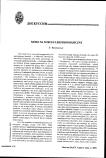Вестник Волгоградского государственного университета. Серия 2: Языкознание @jvolsu-linguistics
Статьи журнала - Вестник Волгоградского государственного университета. Серия 2: Языкознание
Все статьи: 1663
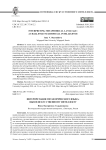
Interpreting metaphorical language: a challenge to artificial intelligence
Статья научная
In recent years, numerous studies have pointed to the ability of artificial intelligence (AI) to generate and analyze expressions of natural language. However, the question of whether AI is capable of actually interpreting human language, rather than imitating its understanding, remains open. Metaphors, being an integral part of human language, as both a common figure of speech and the predominant cognitive mechanism of human reasoning, pose a considerable challenge to AI systems. Based on an overview of the existing studies findings in computational linguistics and related fields, the paper identifies a number of problems associated with the interpretation of non-literal expressions of language by large language models (LLM). It reveals that there is still no clear understanding of the methods for training language models to automatically recognize and interpret metaphors that would bring it closer to the level of human “interpretive competencies”. The purpose of the study is to identify possible reasons that hinder the understanding of figurative language by artificial systems and to outline possible directions for solving this problem. The study suggests that the main barriers to AI’s human-like interpretation of figurative natural language are the absence of a physical body, the inability to reason by analogy and make inferences based on common sense, the latter being both the result and the cognitive process in extracting and processing information. The author concludes that further improvement of the AI systems creative skills should be at the top of the research agenda in the coming years.
Бесплатно
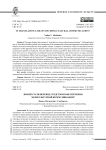
Is translation a means of cross-cultural communication?
Статья научная
The paper disputes the concept of “translation as cross-cultural communication”. Anthropological turn in Translation Studies resulted in the emergence of the communicative-functional approach to translation which dictates the need to reconsider this most popular concept. Examples of translation events are considered from the perspective of this approach to prove that the actors (source text sender, target text recipient and translator) rarely communicate directly or indirectly. The only objective reality accessible to them is the texts in two languages; these texts serve as instruments of substantive activity performed by each of the actors. In many cases the purpose of translation differs from the purpose of the Source Text (ST) Sender, which makes communication between the ST Sender and the Target Text (TT) Recipient impossible. The translator’s principal task is to create a text in the target language that would be useful for the TT Recipients activity. The principal purpose of the TT Recipient is to receive information which could be used successfully in his or her substantive activity. Actors in a translation event deal only with texts, not with each other (except in situations of oral communication in which interpretation is performed). Thus, “translation as cross-cultural communication” is a metaphor used to substitute the wish for the reality. The concept does not fit the mere definition of communication seen as giving information or exchange of information.
Бесплатно
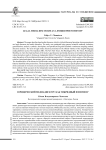
Legal media discourse as a hybrid phenomenon
Статья научная
The paper describes legal media discourse, which is a hybrid discourse formation whose preconstructs are legal discourse and media discourse. The study was conducted using general scientific methods: induction, generalization, analysis, synthesis, description; and specialized linguistic methods: continuous sampling method, discourse analysis. The texts of legal media discourse presented on the official websites of the English-language media platforms such as The Guardian, BBC, The New York Times, The Washington Post, The Times, Washington Monthly, etc. form the empirical basis of the study. Legal discourse and media discourse are institutional discourses whose interaction results in forming an independent hybrid. The article provides the analysis of legal media discourse using the pattern of the institutional discourse description proposed by V.I. Karasik, which consists of the following criteria: typical participants, chronotope, goals, values, strategies, genres, precedent texts, and discursive formulas. The characteristics of the discursive hybrid under study are determined by referring to the preconstruct discourses features identified at the present time. The description of legal media discourse as a specific sphere of the intersection of law and media is viewed as not a mechanical sum of the characteristics of legal discourse and media discourse, but their synthesis which accounts for the independent nature of the hybrid discursive formation.
Бесплатно
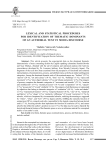
Статья научная
This article presents the experiential data on the dominant thematic characteristics of texts concerning fashion by English speaking columnists Hamish Bowles and Suzy Menkes, obtained with the aid of semantic and statistical analysis (the AntConc concordancer developed by Dr. Laurence Anthony from Waseda University Japan). The fragments of the texts have been examined from the perspective of functional and semantic representations of nominativeness, process, and attributiveness as the basic mental and linguistic categories. Among the dominant thematic units of the nominativeness are: “fashion” (22 %), “person” (20 %), “art and science” (10 %), “time” (4,5 %), “buildings” (4 %), “space and movement” (3 %), “inter-object relations” (3 %), and “plants and animals” (2 %). The category of process comprises the thematic categories of “movement and transfer” (23 %), “creation and modification” (19 %), “mental processes” (18 %) and “cooperation” (6 %), “speech” (5 %), “possession” (5 %) and “similarity” (4 %). The category of attributiveness is represented by adjectives that belong to thematic categories of “evaluation” (40 %), “color and shades” (13 %), “toponymical features” (10 %), “temporal features” (8 %), “size” (6 %), “materials and fabrics” (4 %), “shape” (3 %), “similarity / difference” (2 %) and “restriction” (2 %); by adverbs, which are frequented by circumstantial adverbs, realizing the meaning as suggested by “where”, “when”, and “how” (39 %), degree adverbs, fulfilling the semantic function of comparison (28 %), connective adverbs, responsible for the logical connection between lexical units (17 %), focusing adverbs that implement the function of restriction (9 %), and stance adverbs that reflect the author’s position in a text (7 %). The data may be used to objectify the lexical and thematic features of the thematic space or serve as reference material for conceptual studies of an author’s style.
Бесплатно
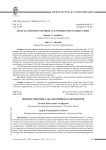
Lingual semiotics of absolute power in the Tudors’ times
Статья научная
The paper addresses the phenomenon of absolute power enablement in Great Britain of the 15th-16th centuries from the perspective of social semiotics and semantics: it includes the definition of obligatory and optional parameters of power and identification of its lingual-semiotic, ethno-cultural and semantic features. The Anglo-Saxon absolute power generates a lingual semiotic space that is structured with a system of verbal and non-verbal signs of various complexity and content; they perform their iconic, directive, evaluative and presentation functions to exercise maximum authoritative impact. Special attention is paid to royal rituals as the power is enabled through them. The case study reveals semiotic, ritual and nominative means of power representation in times of the royal dynasty of the Tudors (1485-1603), a period reputed as England’s “Golden Age”. The semantic space of Anglo-Saxon absolute power is composed from lexical units that nominate subjects, objects, tools and resources of royal power (economic, social, political), as well as its authority actions, conditions and processes that depict the stages of «birth, life and death” of power in general and formation, distribution and enactment of power in England of the Anglo-Saxon era, represented by the specific conceptual and lingua-cultural sphere by means of non-verbal (material) and verbal signs.
Бесплатно
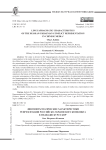
Linguapragmatic characteristics of the Russian-Ukrainian conflict representation in Chinese media
Статья научная
The study is devoted to the linguapragmatic characteristics of the special military operation representation in the media discourse of the People's Republic of China. The material of 230 media texts from the official newspaper of the Communist Party of China, People's Daily Newspaper, and 150 publications from the entertainment social network Zhihu was analysed. The research method proposed was a critical content analysis conducted by means of a concordancer programme with keyword extraction and thematic segmentation. The study revealed differences in the use of linguistic means of forming the image of Russia and identified the linguapragmatic features of the studied media texts, which consist in the emphasis on the historical and socialand-political context of the foreign policy events description. At the same time, social media texts paid more attention to the history of relations between Russia and Ukraine, while the official media described the political and economic consequences of the military conflict. The study shows the applicability of content analysis to identifying the linguapragmatics that characterises the image of the country by analysing the linguistic representation of social-and-political events and state institutions in media texts. Further research should be done to investigate the image of Russian institutions in the Chinese media in order to identify the formation of the image of Russia in the Chinese media.
Бесплатно
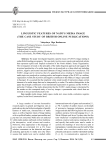
Linguistic features of NATO's media image (the case study of British online publications)
Статья научная
The paper investigates linguistic specific means of NATO's image making in online British leading newspapers. The case study involves news reports and analytical articles that represent explicit and implicit evaluation of the North Atlantic Treaty Organization. The investigation is based on the principles of the media linguistic approach and suggests the structural peculiarities of a media image that can be analyzed as a three-sided unit including positive, negative and neutral structural elements of image introduction into a media text. The NATO's image can be viewed as that of a geopolitical actor, creating its Natoland. Certain media topics are analyzed as creating positive and negative images of the NATO as a military organization. A finite list of positive and negative constituents to the Alliance's image is presented in the paper. It is assumed that the simplistic writer-reader model of interaction shapes certain elements of a media image that can be interpreted by a reader. The author distinguishes in the paper the principle constituents of an international organization in general, and the NATO in particular. Findings of the study demonstrate that the NATO's media image is interpreted by the readers as the conceptual entity of two key images: a peacemaker and a hawk that are restored on lexical and intertextual levels
Бесплатно
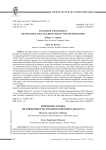
Linguistic pragmatics of english language restaurant online discourse
Статья научная
The paper presents an analysis of linguistic pragmatics of restaurant online discourse that is plunged into studying the content of English versions of British restaurant websites. The authors state that the investigated segment of virtual restaurant communication is organized on the basis of a linguistic-and-pragmatic model, which is constructed from the following components: discourse goal, discourse addresser's intention / communicative-pragmatic purposes with corresponding strategies and tactics. Special attention is paid to the main communication strategies of the discourse under analysis, among which there are the strategies of creating positive emotional mood, constructing an attractive image of the restaurant, increasing the activity of restaurant guests. It is established that these strategies are implemented by a set of tactics. The authors distinguish and describe verbal (lexical, lexical-grammatical and stylistic features), as well as non-verbal means that are used bysite moderators for implementing the desired tactics. It is stated that the most frequent linguistic means are lexical units with emotional-expressive and attitudinal meanings, metaphorical and pleonastic constructions, modal verbs, superlatives; interrogative-responsive and imperative structures; non-verbal means of communication are represented by graphics, font and colour highlighting, various illustrations and photographs. The suggested linguistic and pragmatic model uncovers the following restaurant online discourse regularities: location of zones with verbal or non-verbal dominating means is defined by visual assessment factors of information representation on the website.
Бесплатно
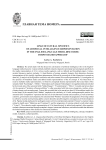
Статья научная
The article deals with the discursive construction of artificial intelligence (AI) in the English-language media discourse. Corpus methods establish semantic, figurative-perceptual and axiological specificity in the media representation of AI in various media segments, such as tabloids and broadsheet papers. Corpus-assisted discourse analysis includes: 1) identification of unique semantic domains that determine discourse interpretations of this socially significant phenomenon, followed by an analysis of their dispersion in narratives about AI; 2) analysis of the figurative-evaluative and value content of its media representation; 3) investigation of the specifics of broadsheet media and tabloid media representations of the AI concept. It was found that AI receives multiple media representations, in which its conceptual features represented by the lexical items of the semantic fields “Knowledge”, “Ability”, “Information and Computer Technologies” are supplemented and enriched by the lexical units of the semantic fields “Safety/Danger”, “Transformation”, “Ethics”. In media narratives about AI, the concept of “imitation of human abilities” is often associated with fake news, plagiarism, warfare, crime, climate change, and unemployment. Corpus data revealed that in the narratives about AI in broadsheet media, the lexical items of the semantic field “Robots” emphasize the similarity of AI with anthropomorphic entities; the semantic field “Competition” represents the idea of a rivalry between a human and a machine, as well as between countries, governments and companies; the semantic field “Warfare” actualizes the pragmatics of warning related to collective security and expressing public concern about the possible negative consequences of the development of AI. Popular media emphasize the androgenic nature of AI, its entertainment potential (“Games”), practical values related to health care (“Medicines and Treatment”); and the pragmatics of warning related to individual safety (“Crime”). The evaluative media representation of AI is formed mainly by ethical and practical, often negative, evaluative features transmitted through metaphoric images, intertextual references, and cultural models that determine the behavioural patterns of the discursive community members.
Бесплатно
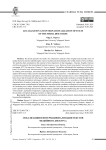
Localization and internationalization of texts of the media discourse
Статья научная
The article presents the results of a comparative analysis of the original and secondary texts of media discourse aimed at identifying the ways to localize and internationalize the verbal content of news websites. The study has been conducted on the material of news hypertexts in four languages - Russian, English, German and French, posted on the international Internet resource rt.com , Business Insider news portal, National Review newspaper, RTD Documentary Channel , L’Express journal. The authors substantiate the importance of using the terms ‘ localization ’ and ‘ internationalization ’ in translation studies to name inter-language transformations used in creating news messages, and analyze the definitions of these concepts in the frameworks of linguistics. The analysis shows that in many cases the standard translation model “source text translation text”, which presupposes a certain level of semantic equivalence, loses its relevance, since the secondary text is a new verbal product. It has been shown that the localized verbal space of the analyzed international media websites is created through the use of the following translation techniques: addition / omission of information in accordance with the pragmatic characteristics of readers, inclusion of culture-specific vocabulary in the secondary text, explication of toponyms and proper names, neutralization of imagery, omission of precision vocabulary, indication of a personal viewpoint of a secondary text’s author, historical reference to allusions. It has also been revealed that internationalization of texts is performed through omission of cultural markers, addition of phrases emphasizing the view on the country “from outside”, explication of toponyms, replacing proper names with generalized lexemes, as well as by indicating the positions of English-speaking countries on topical issues.
Бесплатно
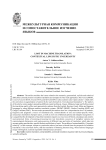
Lost in machine translation: contextual linguistic uncertainty
Статья научная
The article considers the issues related to the semantic, grammatical, stylistic and technical difficulties currently present in machine translation and compares its four main approaches: Rule-based ( RBMT ), Corpora-based ( CBMT ), Neural ( NMT ), and Hybrid ( HMT ). It also examines some “open systems”, which allow the correction or augmentation of content by the users themselves (“crowdsourced translation”). The authors of the article, native speakers presenting different countries (Russia, Greece, Malaysia, Japan and Serbia), tested the translation quality of the most representative phrases from the English, Russian, Greek, Malay and Japanese languages by using different machine translation systems: PROMT (RBMT), Yandex.Translate (HMT) and Google Translate (NMT). The test results presented by the authors show low “comprehension level” of semantic, linguistic and pragmatic contexts of translated texts, mistranslations of rare and culture-specific words, unnecessary translation of proper names, as well as a low rate of idiomatic phrase and metaphor recognition. It is argued that the development of machine translation requires incorporation of literal, conceptual, and content- and-contextual forms of meaning processing into text translation expansion of metaphor corpora and contextological dictionaries, and implementation of different types and styles of translation, which take into account gender peculiarities, specific dialects and idiolects of users. The problem of untranslatability (‘linguistic relativity') of the concepts, unique to a particular culture, has been reviewed from the perspective of machine translation. It has also been shown, that the translation of booming Internet slang, where national languages merge with English, is almost impossible without human correction.
Бесплатно
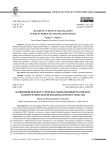
Machine vs human translation in the synergetic translation space
Статья научная
The paper focuses on English-to-Russian translations of patent applications on the website of the World Intellectual Property Organization (WIPO). A comparative analysis of patent applications is performed by using translations made with the help of the WIPO Translate tool and human translators within the framework of the synergetic translation space concept encompassing the domains of the author's intensions, text content and composition, energy, translator, recipient, and the translation acceptability notion. The translation erratology aspects were considered from the point of view of the semantic, referential, and syntactic ambiguity within the domains of content-composition and energy space. In the domain of the author, the intention to convey some technical information is revealed, while its rendering in the content-composition and energy domains depends on whether the translation is made by a person or a machine. Genre- and composition-related specifics have been rendered in both cases while machine translation errors have been proven to result from the semantic, referential, or syntactic ambiguity, and this is when the translated output is generally considered unacceptable by the recipient. The results obtained can be used for editing machine translations of patent documentation, assessing the quality of technical documentation translation that is referred to other specific genre conventions.
Бесплатно
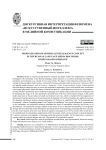
Статья научная
Based on corpus-assisted discourse analysis, the paper studies the mediatization of artificial intelligence (AI) technology in the Russian-language media discourse as a construe technique that shapes AI perception and evaluation as a concept of new social reality. The paper reveals linguistic portraying of the AI concept in Russian digital media corpus, construed by business-oriented outlets Kommersant, Vedomosti, RBC, and popular media resources, such as Lenta.ru, Argumenty i Fakty, Komsomolskaya Pravda. Corpus-assisted discourse analysis comprises aims to extract the quantitative parameters of texts and establish their correlations with content parameters; define the themes of narratives about AI, which determine its discursive interpretation, and describe their distribution across the Russian-language news digital corpus; define discursive strategies used for designing the image of AI. The quantitative characteristics of the texts construing AI imagery in the corpus under study point to the prevalence of small and moderate size texts, which is explained by the pragmatics of informing a broad lay audience on advancement and development of AI without initiating any public discussions. The thematic distribution analysis showed domination of “Positive AI capabilities” and “AI development and Investments”, whereas “Impending danger” and “Negative AI capabilities” are covered infrequently. Argumentation in the explanatory and prognostic strategies introduces the topoi of inevitability, necessity, and rivalry in AI development. The explanatory strategy expands on the nature of AI, its functions and potential. The prognostic strategy delivers information on the development and advancement of AI technology, portraying efficiency scenarios, but only a tiny fraction of the texts warn about the negative consequences of AI. The novelty of the results lies in the establishment of contradictory mediatization of the AI concept, which, on the one hand, is aimed at depicting its positive portrayal and capability of bringing social and economic benefits. On the other hand, it contains a warning about its potential dangers and risks if the spheres of its application expand.
Бесплатно
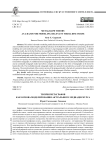
Metagraph theory as a basis for modeling relevant media discourse
Статья научная
This article is devoted to modeling media discourse based on a combination of a complex graph model and a multidimensional model. Despite significant advances in the field of neural network text processing, the task of modeling text and media discourse remains relevant. Large language models cannot be considered as a reliable discourse model, due to the fact that they are susceptible to hallucinations, which are features of model training and are difficult to diagnose and eliminate in practice. The basic model within the framework of the proposed approach is an annotated metagraph model; the main element of this model is the metavertex. The presence of metavertices with their own attributes and connections with other vertices corresponds to the principle of emergence, that is, giving the concept a new quality, the irreducibility of the concept to the sum of its component parts. Metagraph agents are used to transform metagraphs. A multidimensional metagraph model is a combination of a classical multidimensional model and an annotated metagraph model and allows complex descriptions in the form of metagraphs to be stored in hypercube cells. The multidimensional metagraph model can naturally be considered as a model of text and media discourse. The main drawback of the current version of the proposed model is the lack of a semantic discourse check system. Designing this system is the main direction for the development of further research.
Бесплатно
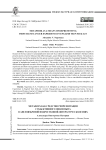
Metaphor as a means of representing first-hand cancer experience in English teen sick-lit
Статья научная
The present paper is a contribution to the study of cancer metaphors in contemporary English. It focuses on the ways cancer is conceptualized in teen sick-lit, a relatively new genre of children's literature which presents stories of severe illnesses that afflict teenagers, cancer being the most important of them. The analysis is based on four novels that employ the first-person narrative mode. It rests upon the Conceptual Metaphor Theory, utilizing such specific research instruments as the Career of Metaphor Theory (B. Bowdle and D. Gentner) and the concept of metaphorical creativity (Z. Kovecses). The novelty of the research angle is that the paper takes a differentiated approach towards cancer metaphor analysis, first identifying thematic groups relevant to cancer experience and then tracing patterns of metaphor use within each group. The four groups presented in the study are metaphors of cancer itself, cancer patients, diagnostic procedures and treatments, and physical and emotional conditions of patients. It is proved that there are metaphors that demonstrate a strong inclination to reflect only one aspect of cancer experience. Thus, the actively promoted journey metaphor appears suitable only for conceptualizing procedures and treatments, while war metaphor proves versatile. Further on, the paper analyzes instances of the war metaphor use proving that far from being obsolete, it has a considerable conceptual and communicative potential and can be developed further.
Бесплатно
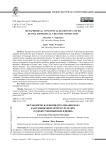
Metaphorical Conceptualization of Cancer in English Medical Creative Nonfiction
Статья научная
The paper discusses the phenomenon of medical creative nonfiction, delineating the factors that engender demand for this type of literature, listing its types and identifying its main features. It highlights the importance of language choices in the presentation of medical facts, as creative nonfiction aims to be comprehensible, engaging and aesthetically pleasing. The paper further narrows down the topic to nonfiction about cancer and considers the use of metaphors as a means of conceptualizing this disease. It provides an analysis of metaphors in two bestsellers written by medical professionals: S. Mukherjee’s “The Emperor of All Maladies: A Biography of Cancer” and J. Fung’s “The Cancer Code: A Revolutionary New Understanding of a Medical Mystery.” The methodological foundation for the analysis is the refined version of the Conceptual Metaphor Theory, supplemented by the Discourse Metaphor Theory (J. Zinken) and the Metaphoric Creativity Theory (Z. Kövecses). The authors reveal the main patterns of metaphor use in each book. The most common source domains utilized in both books are WAR, LIVING BEING, PLANT and SPACE, while JOURNEY, which is a highly recommended source domain for the conceptualization of cancer in contemporary discourses, is barely noticeable. The authors further identify creative metaphors, analyze their conceptual structure, and compare the use of metaphors in the two books to demonstrate the possibility of conceptual experimentation with the topic despite the pressure of discursive conventions.
Бесплатно
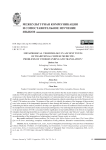
Статья научная
The author's hypothesis proceeds from the position that the ancient treatises of traditional Chinese medicine (TCM) describe metaphorically an ethnocultural understanding of neuro-linguistic and psychophysiological processes in the human body from the perspective of communication between large and small. TCM terms are medical concepts that also contain deep philosophical and linguistic-cultural content plans, due to the Wenyan-style in which TCM treatises are written. The purpose of the work is to identify the patterns of the language of these ancient texts in the context of the interpretation presented in them through the hierarchy of 'state and subjects'. The use of methodological holism made it possible to develop a new approach to the texts of traditional Chinese medicine from the standpoint of communication studies and neuropsycholinguistics. The mythologized interpretation of the concepts in the ancient treatises of TCM is associated with the signification of any health problem in the form of an expanded metaphor characterizing the problem as a violation of 'communication' in the body-'state' between 'vassals', 'individual social groups' and their 'leaders'. This positioning of the body's work through the prism of social relations provides an understanding of the interpretation of relationships in ancient Chinese society as a whole.
Бесплатно
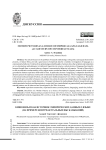
Motion pictures as a source of empirical language data (a case study of counterfactuals)
Статья научная
The article focuses on the problem of research methodology in linguistics and argues that motion pictures, or feature films, provide a good source of empirical data for a realistic investigation of language as a communicative behavior. Evidence from epistemologyand philosophy of science shows that scriptism and rationalism as two dominating methodologies in traditional linguistics do not give a whole picture of language functionality because through them we cannot observe a human’s communicative behavior in dynamics. The aim of the article is to offer an alternative understanding of the subject-matter, method and data for linguistic research which would be grounded on human experience observable in films. In particular, the term ‘languaging’ is adopted to describe the dynamic process of experience construction in referential and attentional framings. The investigation of languaging is thus based on the principle of holism, circularity and ‘double perspectival’ view of one’s experience. The author of the article gives a number of reasons why written texts alone do not provide reliable data in this respect and why motion pictures are a more viable alternative. The paper introduces the methodology of holistic research and open-ended experiential analysis and demonstrates in a case study how counterfactuals as grammatically and experientially enacted patterns can be observed and investigated in the film Atonement .
Бесплатно
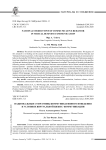
National stereotypes of communicative behavior in virtual business communication
Статья научная
The article is devoted to cross-cultural issues of virtual business communication. The urgency of this research is in finding out the causes of failures in virtual business communication between Russian and Vietnamese business partners. In the aspect of intercultural communication, national stereotypes of communicative behavior (hereinafter NSCB) that impede the effective business communication of Russian and Vietnamese speakers have been identified. In the aspect of virtual communication, based on linguistic and cultural analysis, the specifics of electronic business letters in Russian, English and Vietnamese is revealed. The results of the study indicated the following reasons of failures in virtual intercultural business communication: lack of direct interactions between business partners - speakers of different languages; representation of communicative intentions in written form; peculiarities in NSCBs, reflected in the national language; cultural differences in NSCBs of business partners; each language has its own means of verbalizing the communicative intentions associated with the NSCBs of the native speaker of that language. The study resulted in distinguishing the types of speech and etiquette violation in virtual business communication between Russian and Vietnamese partners, which might help in lessening communicative misunderstanding and achieving extra-linguistic goals of communication.
Бесплатно

